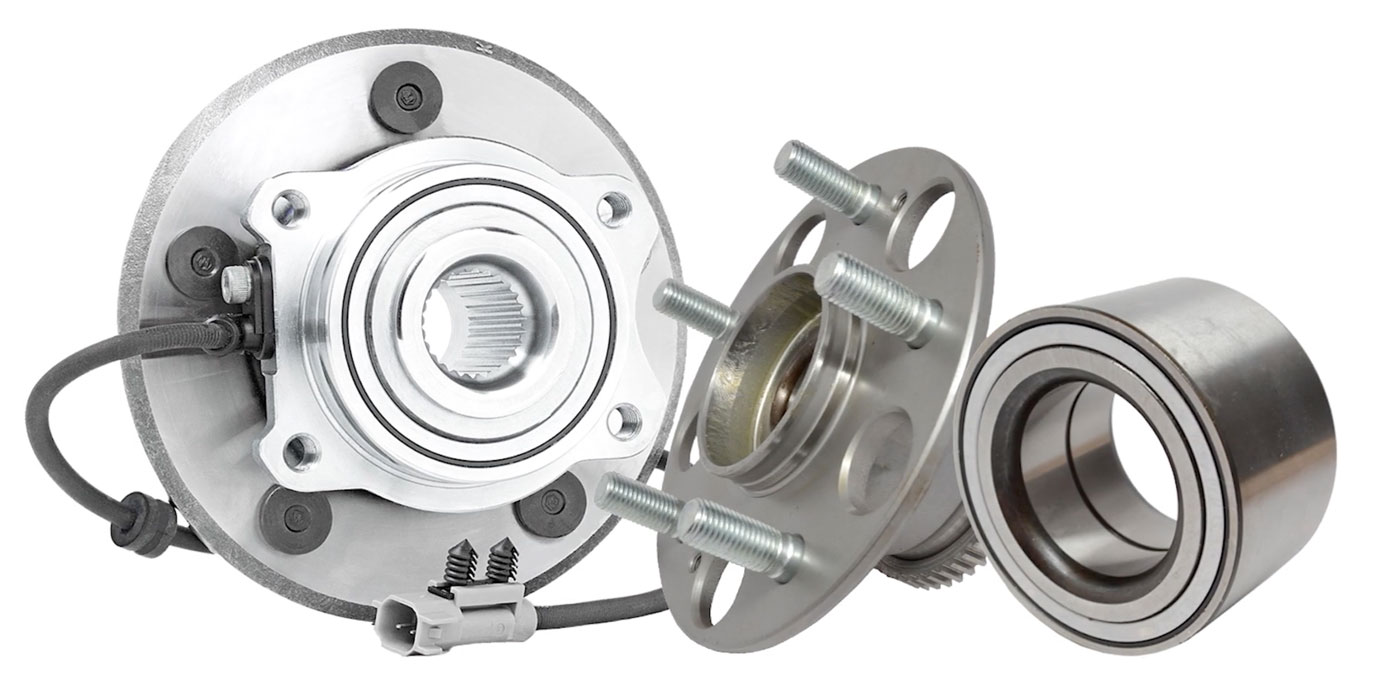A vehicle will provide clues when something is wrong, often in the form of an unusual sound, smell or vibration. As I’ve learned from experience, a bad wheel bearing produces an unmistakable noise that just screams, “Repair me!” For me, the sound was the equivalent of nails on a chalkboard, because I knew something was terribly wrong.
The classic sound associated with a bum bearing is a grinding noise that changes with vehicle speed, typically while accelerating above 30 mph. To pinpoint the general location of the bad bearing in my vehicle, I found it helpful to roll down the windows and turn off the radio while driving. For your customers who prefer the ignore-it-and-hope-it-goes-away approach, they might want to pump up the volume with their favorite music – Quiet Riot’s “Come On Feel the Noize” comes to mind. (If ever there was a song title that speaks to the diagnostic power of the human ear, that has to be it.)
A bad wheel bearing can make a number of other unpleasant sounds. A rumbling, growling, humming, chirping or cyclic noise of any kind from the vicinity of the wheels also can be a good indication that the bearings need to be inspected without delay. In my case, the noise was halfway between a hum and a ghostly groaning sound. Typically, these sounds will get louder as the vehicle accelerates – and that was certainly the case with my vehicle. Also, if the noise changes when the vehicle is turning, that’s another indication that it’s a bad wheel bearing.
Another sure sign of a bad wheel bearing is noticeable play in the tire, in both directions. If there’s no movement in the tie rod or the upper and lower ball joints, but there’s play in the tire, there’s a good chance your customer has a bad wheel bearing.
“The most common method of testing wheel bearings is to lift the vehicle and grab the wheel at the 12 o’clock and 6 o’clock positions to feel if there’s any noticeable play,” Andrew Markel explains in a recent article for Brake & Front End, a sister publication of Counterman. “By grabbing the wheel at these points, any play in the steering system is eliminated. But, with some hub units, the failure tolerance may be so low that a bad bearing is undetectable by this method. In these cases, a dial-runout gauge could be your best friend.”
In the good ole days, wheel bearings were cheap, simple, serviceable components that had to be inspected, cleaned and repacked with grease at least every 25,000 to 30,000 miles during a brake job. While the old-style tapered roller bearings aren’t so common anymore, you still might find them on trailers, some two-wheel-drive pickup trucks and older vehicles. A vestige of a bygone era, tapered roller bearings need to be cleaned, inspected and repacked with grease on a regular basis. If they’re not serviced regularly, or if they’re not adjusted properly when they’re serviced, the wheel bearings can wear out prematurely.
Most late-model vehicles, however, come with sealed bearings and hub assemblies, which are pre-greased and maintenance-free.
Typically, a sealed wheel bearing should be good for 85,000 to 100,000 miles and, yes, some can last the entire life of the vehicle without failing.
So, what the heck could go wrong? Well, as resilient as they are, these newer generations of bearings will fail prematurely if they’re pushed beyond their design limits. An obvious example would be using your car for racing. The bearings in front-wheel drive passenger cars aren’t designed to handle the severe cornering forces encountered on a racetrack.
In the real world, though, most people don’t use the family vehicle for racing. But you’ve probably had some customers who’ve used suspension lift kits and installed mudder tires or some other aftermarket performance wheels on their light-duty pickup trucks. While this might look cool, it’s a recipe for trouble, because oversized tires place additional stress on bearings.
Environmental contamination such as water, dirt and road salt also can cause a bearing to fail. If you’re driving through high flood waters or going off-roading through creeks and mud, that can allow water to get inside the bearings, and most bearings aren’t designed to handle that. Driving in northern climates where there’s a lot of road salt also can increase the risk of contamination and failure.
That said, the cause of many premature bearing failures is much less glamorous. Usually, the problem starts with a small imperfection on the bearing surfaces. Often, the culprit is the impact of a vehicle hitting a curb, pothole or other object in its path. When a vehicle hits a pothole or curb hard enough, it transfers extreme forces onto the balls or rollers and races of the bearing. If it causes surface damage, this phenomenon is known as Brinelling.
“This surface failure/defect is caused by contact stress that exceeds the material’s hardness limit,” Markel explains in Brake & Front End. “Brinell marks may cause the bearing to immediately make noise, and as the marks keep rotating, it could damage the entire bearing. If the impact is great enough, the preload on the bearing can change. This can lead to more damage and noise as debris finds its way into the grease.”
As a counter pro, the best way to prevent this kind of situation for your customers is to recommend high-quality products. I know, that probably seems like a boilerplate recommendation. (After all, who wants to recommend a low-quality product?) But, it’s really important when we’re talking about wheel bearings. High-quality hub units or bearings typically use higher-quality materials and heat-treating processes that make for harder surfaces, which are better-suited to resist impact damage.
For example, the quality and cleanliness of the steel used in the housing, cage and roller elements make a big difference in the durability of the bearing. Bearings manufactured with lower-quality steel won’t stand up to the same amount of wear and tear as bearings made with high-quality, clean steel. On top of that, economy bearings might use lower-quality material instead of nitrile for the seals, which can comprise the integrity of the seal and lead to premature failure of the bearing.
Many newer wheel-hub assemblies have built-in ABS sensors. Economy wheel-hub assemblies often use lower-quality sensors and cable materials, which are more prone to failure. And, if your customer buys a low-quality offshore hub assembly online, God forbid, it might have the wrong ABS sensor or no sensor at all.
Don’t go cheap on bearings. By recommending a premium product, you ensure that the materials and engineering match or exceed OE standards. Also, you’ll have fewer comebacks and more satisfied customers, and the peace of mind that you’ve recommended the safest and most reliable option for your customer.














